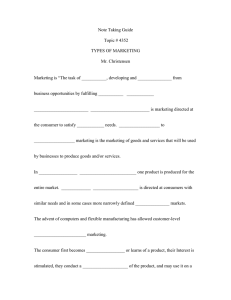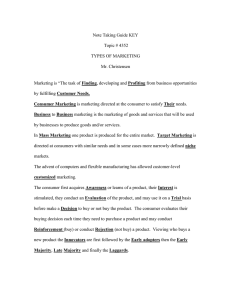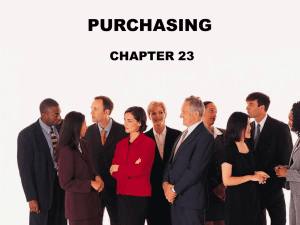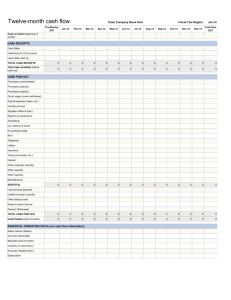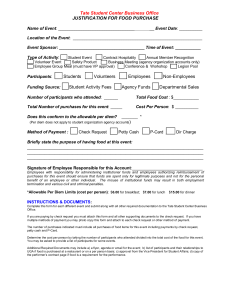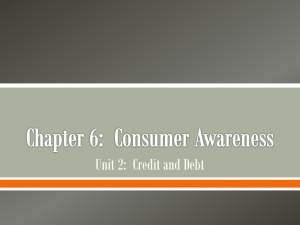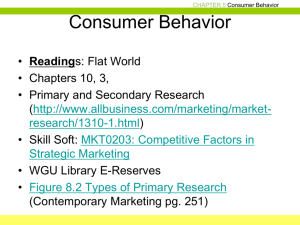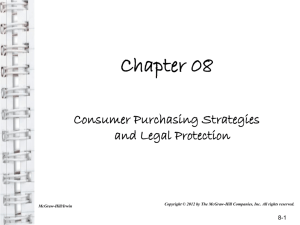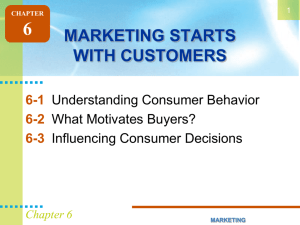Consumer Motivation PowerPoint
advertisement
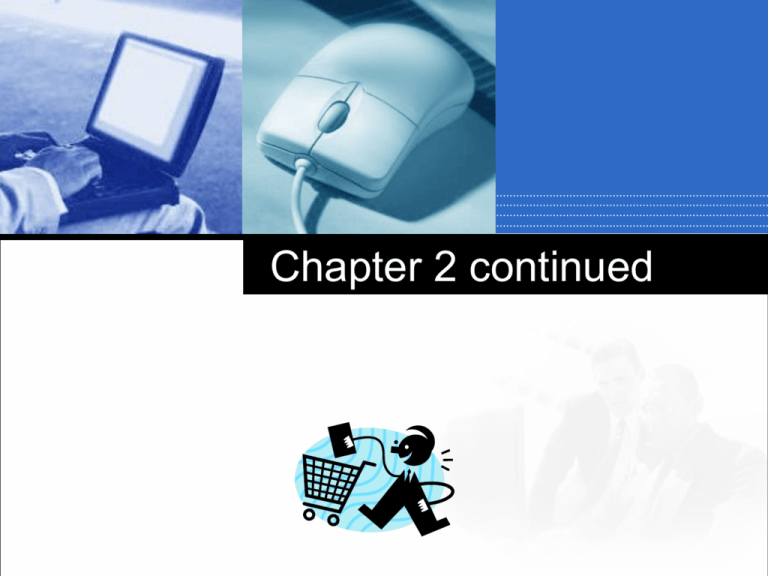
Chapter 2 continued Company LOGO 2.3 The Consumer Market everyone has a unique blend of personality, values, beliefs, physical features, history, etc. if marketers are to be successful, they need to understand their potential customers to anticipate or influence their needs and wants marketers create consumer profiles of the kind of people most likely to be attracted to a product it turns out that groups of people who are attracted to one product are often attracted to others 2.3 The Consumer Market then they attempt to combine consumers into cohorts, groups with similar characteristics called consumer segments ex: teenagers, baby boomers, boarders, etc. these are further divided into primary (most likely consumers) market and secondary (occasional consumers) market most marketing is aimed at primary market Example Let’s take for example a cup of coffee at Starbucks. Who would be attracted to this product? (i.e. age group, gender, etc.) Who would you consider the primary market and who would be the secondary? 2.3 The Consumer Market Psychographics system for measuring consumers beliefs, opinions and interests looks to recognize patterns so that marketing mix can be done more effectively ex: people who are interested in exercise likely value low fat foods 2.3 The Consumer Market Geographics marketing based on patterns based on where people live ex: rural consumers have different needs (snow removal, grass cutting) than apartment dwellers in the inner city (may not even need a car) 2.4 Consumer Motivation Motivation is the biological, emotional, rational and/or social force that initiates and directs behaviors since buying is a behaviour, marketers need to understand motivation biological forces are linked to our most basic needs for survival these need to be satisfied first 2.4 Consumer Motivation emotional forces include love, sympathy, joy, anger, fear, etc. can either motivate the consumer positively (like love) or negatively (like fear) most purchases mix of positive and negative rational forces are often in conflict with emotional ones rational forces deal with logic ex: cost, convenience, safety, needs 2.4 Consumer Motivation societal forces are caused by other people friends, family and society in general celebrity endorsements are an example motivational theories are used to explain human behavior Thorndike’s Law of Effect consumers are motivated to buy products that produce positive events and reduce negative events most purchases are influenced by both 2.4 Consumer Motivation Maslow’s Hierarchy of Needs consumers respond to motivation according to levels of needs in this order: physiological safety/security affiliation esteem if these needs are met, the person may then be motivated by growth needs 2.4 Consumer Motivation Alderfer’s ERG Theory He modified Maslow’s theory to include only three levels of human needs: Existence All physical and psychological needs necessary for survival Relatedness All needs for personal relationships Growth Need to be productive, self fulfillment 2.5 The Buying Decision 1. 2. 3. 4. 5. 6. the buying process occurs in response to a need or want, for example MP3 player breaks decisions made on what to buy search made for products available decision among products is made MP3 player purchased purchase is evaluated 2.5 The Buying Decision but the buying process only works for large purchases made occasionally does not work for impulse purchases also does not work for product purchases where brand is not important in these last two cases, the retailer may significantly influence the purchase see the Lee Valley item on page 72, read it now and answer the 2 questions at the bottom of page 73 2.6 Industrial/Institutional the Industrial/Institutional consumer purchases for a business purchase criteria are almost entirely rational what is the cost/profit margin? will the customer buy it? can it be shipped to me on time? tenders may be used in purchases here and pricing is critical Chapter 2 Review Questions Do Page 78 #1, 2, 4, 5
